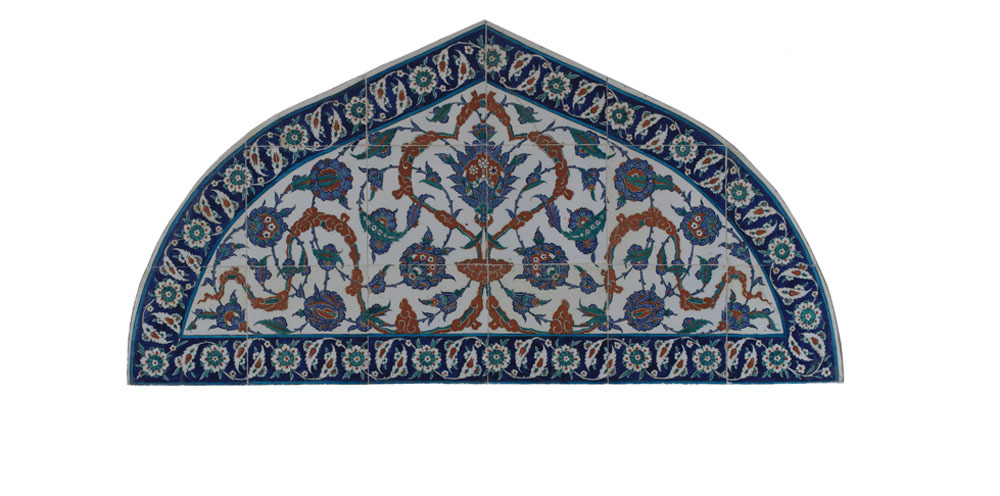
- Turkey, Iznik, c. 1573
- Underglaze-painted composite body
- Inv. 1598A
Tile tympanum
This piece belongs to a series of almost a dozen identical panels from the Piyale Pasha mosque in Istanbul. After an earthquake had damaged the building it was restored but the panels were dismantled and substituted by painted murals, which meant they came onto the market at the end of the 19th century. The series is currently dispersed around a number of European museums.
The central composition in various colours is framed by stylised cloud scrolls forming a serpentine ribbon that encloses a lotus flower, in a trilobed loop. From the central motif spirals of slender branches with leaves, blossom buds and hatayi motifs unfold (festoons of flowers of Chinese inspiration). The utilisation of the same, highly dynamic, decorative scheme on all the tympanums, leads to the assumption that an identical design, probably created by the imperial palace workshops, was used for all.
Unknown.
H. 71 cm; W. 142 cm
London 1976
The Arts of Islam, exhibition catalogue. London: The Arts Council of Great Britain (Hayward Gallery), 1976, p. 270.
Bernus-Taylor et al 1990
Marthe Bernus-Taylor et al., Soliman le Magnifique, exhibition catalogue. Paris: Galeries Nationales du Grand Palais, 1990, pp. 139–140, no. 148.
New York 1999
Katharine Baetjer and James David Draper (eds.), 'Only the Best'. Masterpieces of the Calouste Gulbenkian Museum, Lisbon, exhibition catalogue. New York: The Metropolitan Museum of Art, 1999, p. 69, cat. 31.
Madrid 2001
Un jardín encantado. Arte islámico en la Colección Calouste Gulbenkian, exhibition catalogue. Madrid: Fundación Santander Central Hispano, 2001, pp. 64–5, no. 18.
Lisbon 2001
Calouste Gulbenkian Museum. Lisbon: Calouste Gulbenkian Museum, 2001, p. 50, cat. 33.